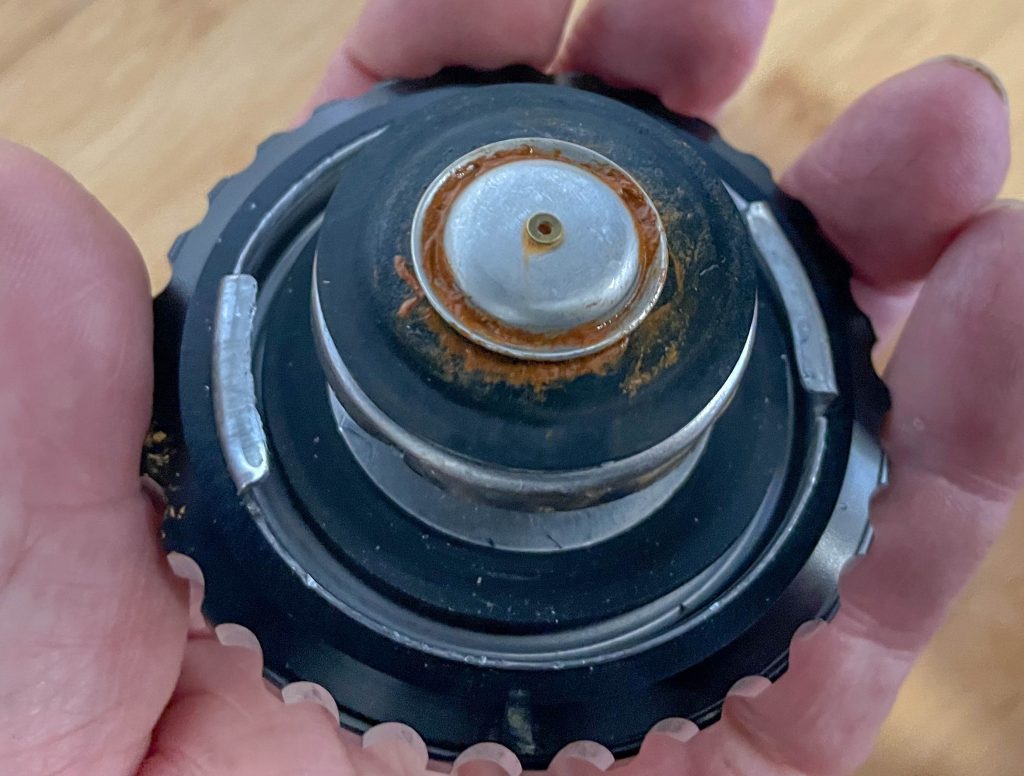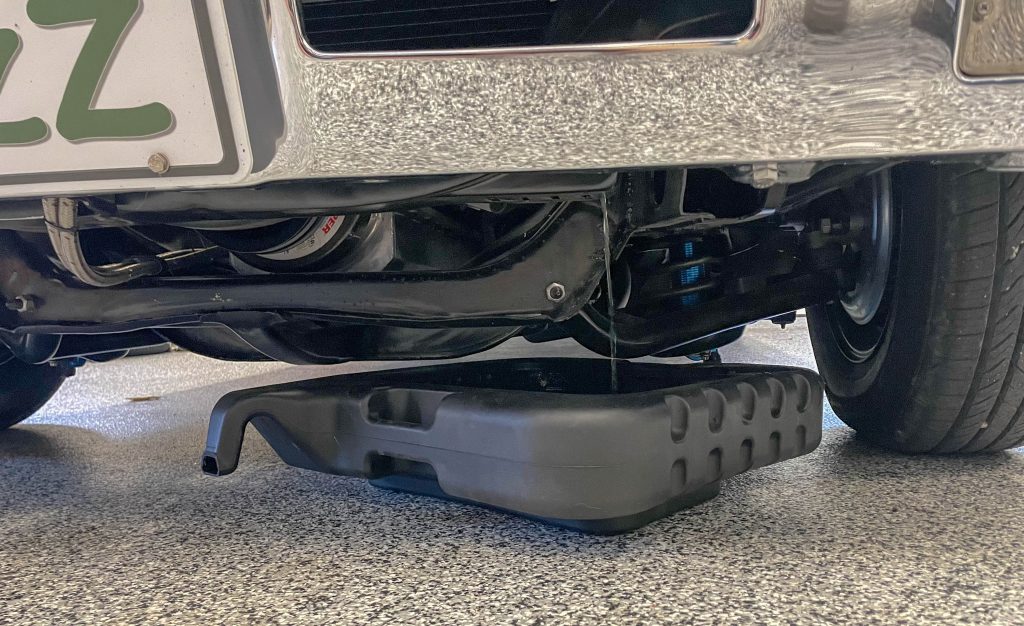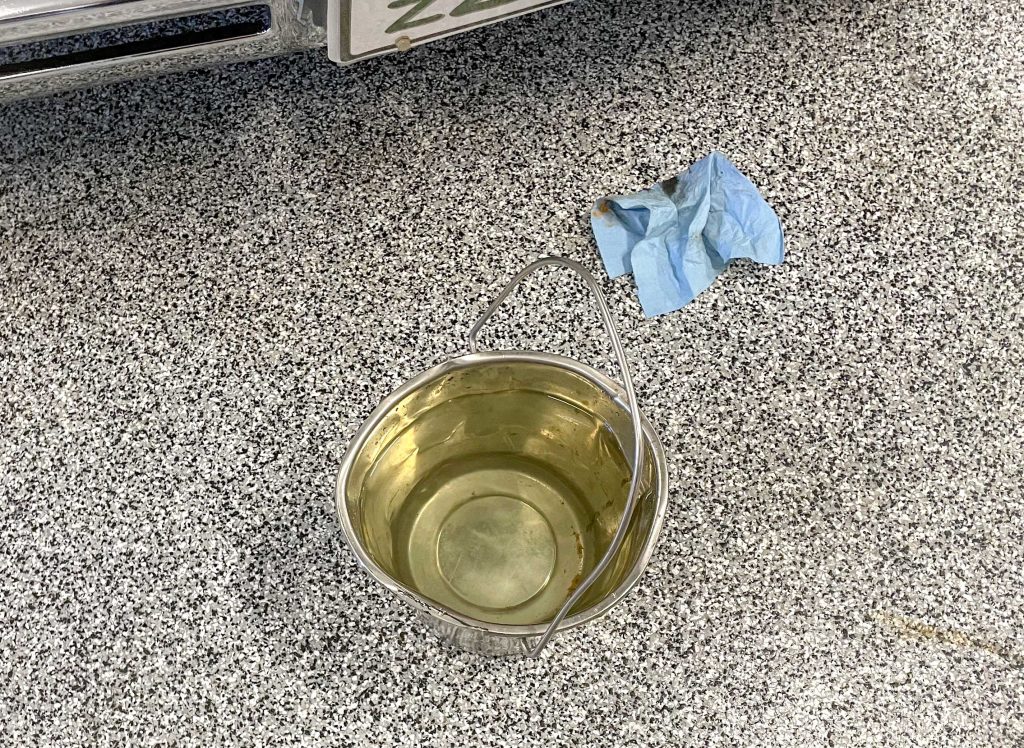I had an unexpected little issue with my hot rod and I think it’s worth sharing:
When I built a fresh engine and installed it in the car, I used tap water to get it running. I don’t like using coolant (glycol based antifreeze) in case there’s an issue with a head or intake gasket leak or failure. It’s easier to clean up tap water.
Plus, if it’s taken to the dragstrip, it can’t have coolant—tracks and sanctioning bodies don’t want to deal with the potential mess of spilled glycol based coolants. Rules are rules.
Everything worked great, and I never gave it a second thought. But then I started to notice a very large iron build up in the cooling system.
Now what?

The background is, I live in the country and use iron-heavy well water. The water is filtered in the house, but there’s a catch: The water spigot I have in the shop bypasses the water softener along with the water treatment system the house uses (reverse osmosis). I completely forgot about that little detail.
That caused some headaches.
Here’s the fix (and I accomplished this without a radiator flush “T” fitting adapter, which would have simplified the operation).
7 Steps to Flush Your Engine’s Radiator & Cooling System
- Step 1: With the engine off and cool, open the radiator petcock and drain the coolant. Remove the rad cap to speed up the process.
- Step 2: Close the radiator petcock and add fresh tap water along with one bottle of commercial cooling system flush. I used a product made just for flushing crud out of the cooling system, but SummitRacing.com offers a number of different options including DEI Radiator Relief Cooling System Flush, Permatex Heavy Duty Radiator Cleaner, Liqui Moly Radiator Cleaner, and more. The flush cleaners are typically designed to clean solder bloom, oily residue, rust, and scale from the cooling system. Most work with aluminum or copper/brass radiators, and some actually lubricate the water pump too. One bottle of the flush is usually good for approximately 16 quarts of coolant capacity.
- Step 3: Start the engine and bring it to operating temp. Allow it to run at operating temperature for 15 minutes.
- Step 4: Allow the engine to completely cool and drain the coolant again.
- Step 5: Close the rad petcock and fill the system with straight distilled water. Start the engine and bring it to operating temperature again. And just like Step 3, allow it to run at operating temperature for 15 minutes.
- Step 6: Once more, allow the engine to completely cool and drain the coolant again (now pure distilled water). In my case, the distilled water was coming out very clean (see the accompanying photo). Mission accomplished.
- Step 7: Close the petcock and refill the radiator. With my car, I refilled the cooling system with a mix of distilled water and “super coolant.” Again, Summit Racing offers several different brands, including Liquid Performance Ice Water Super Coolant, Lucas Super Coolant, Redline Water Wetter, and others. If you have a need for antifreeze, you can use a mix of coolant (antifreeze) and distilled water. In most cases, you’ll discover the radiator will need topping off (with distilled water) after a cycle or two. By the way, some of the coolant additives available do not contain glycol so they’re safe to use at a race track.
Are Additives & Flushing Your Radiator Effective?
The job is done. But is there any advantage to using one of the super coolants or something like Water Wetter? Essentially, these coolant additives are engineered to reduce the surface tension of water. In turn, this helps with heat transfer. The additives also lubricate the water pump. They also help to prevent corrosion, erosion, and electrolysis of all parts of the cooling system, including aluminum, plastics, and rubber.
Most work well with all types and colors of glycol/water based coolants including yellow, orange, pink, red, purple, blue, green regular silicate and non-silicate, and extended life antifreeze. It also works great in systems containing only water.
So did the simple flush work? Absolutely. The heavy iron buildup I had on the radiator cap is completely gone, plus the cooling system operates perfectly. The bottom line here is, a clean cooling system runs cooler and the costs associated with this fix are minimal.









I’m rebuilding a 1998 Camaro and have seen Evans coolant in the Summit catalogue. At this point the entire cooling system is still to be completed but this would be the time to use this. I’m in the great white north and require anti-freeze for winter storage. This product is good for -40F and is claimed to have a boiling point of 375. Never gets that warm here, chuckle, chuckle.
Hey Jeff, thanks for reading–you may enjoy this article too, Evans Waterless Coolant: Better Engine Protection When Things Heat Up